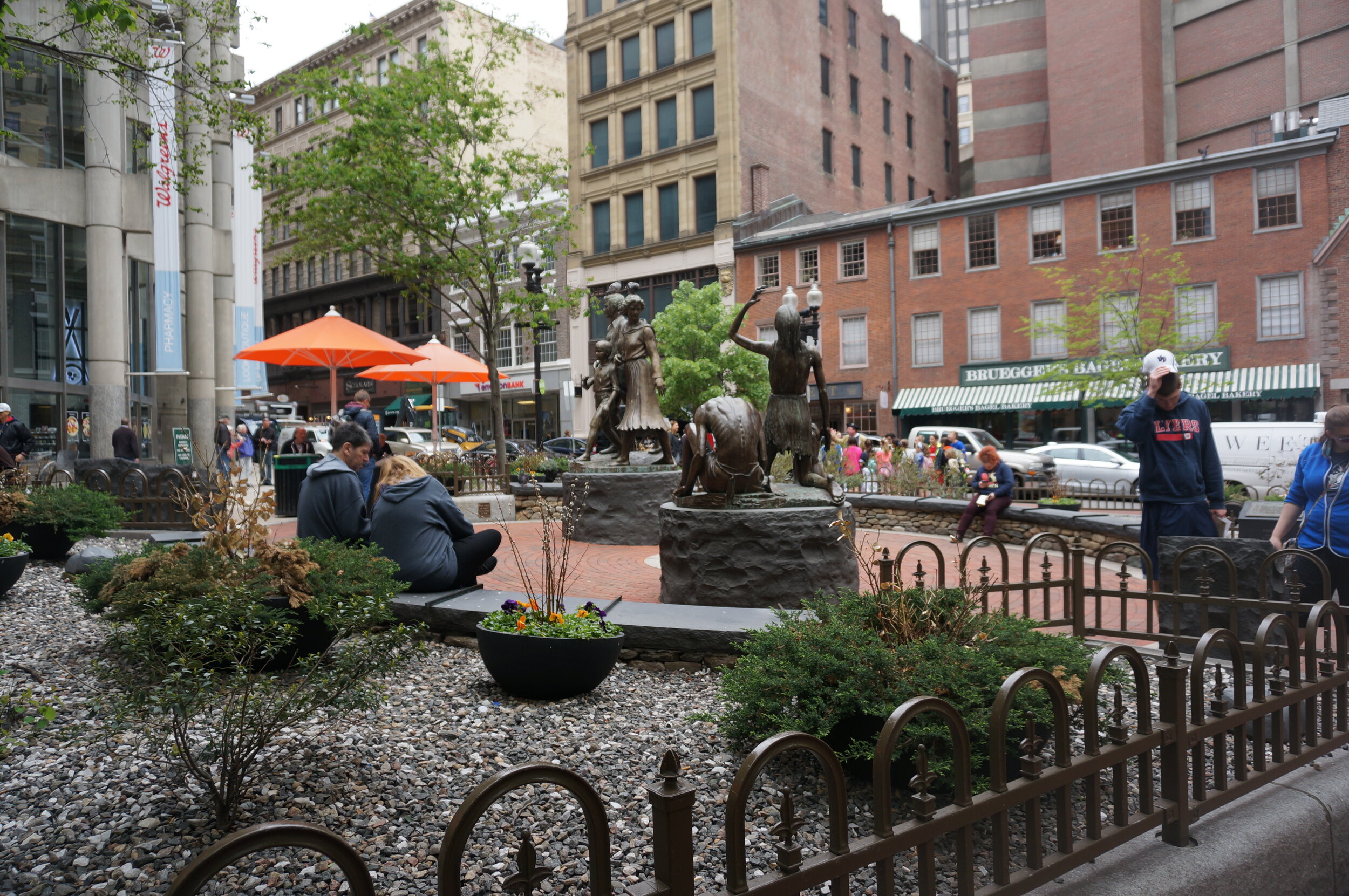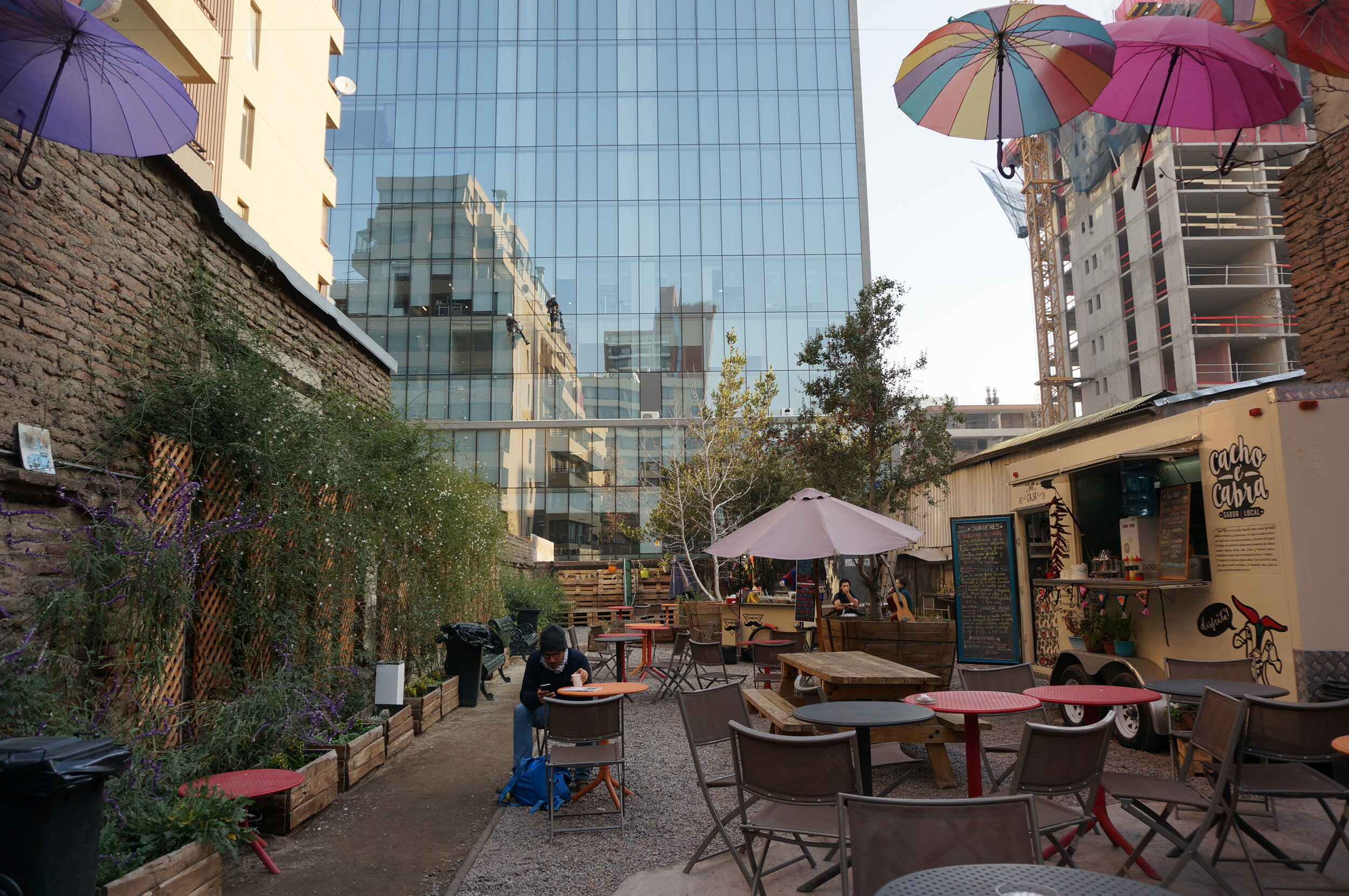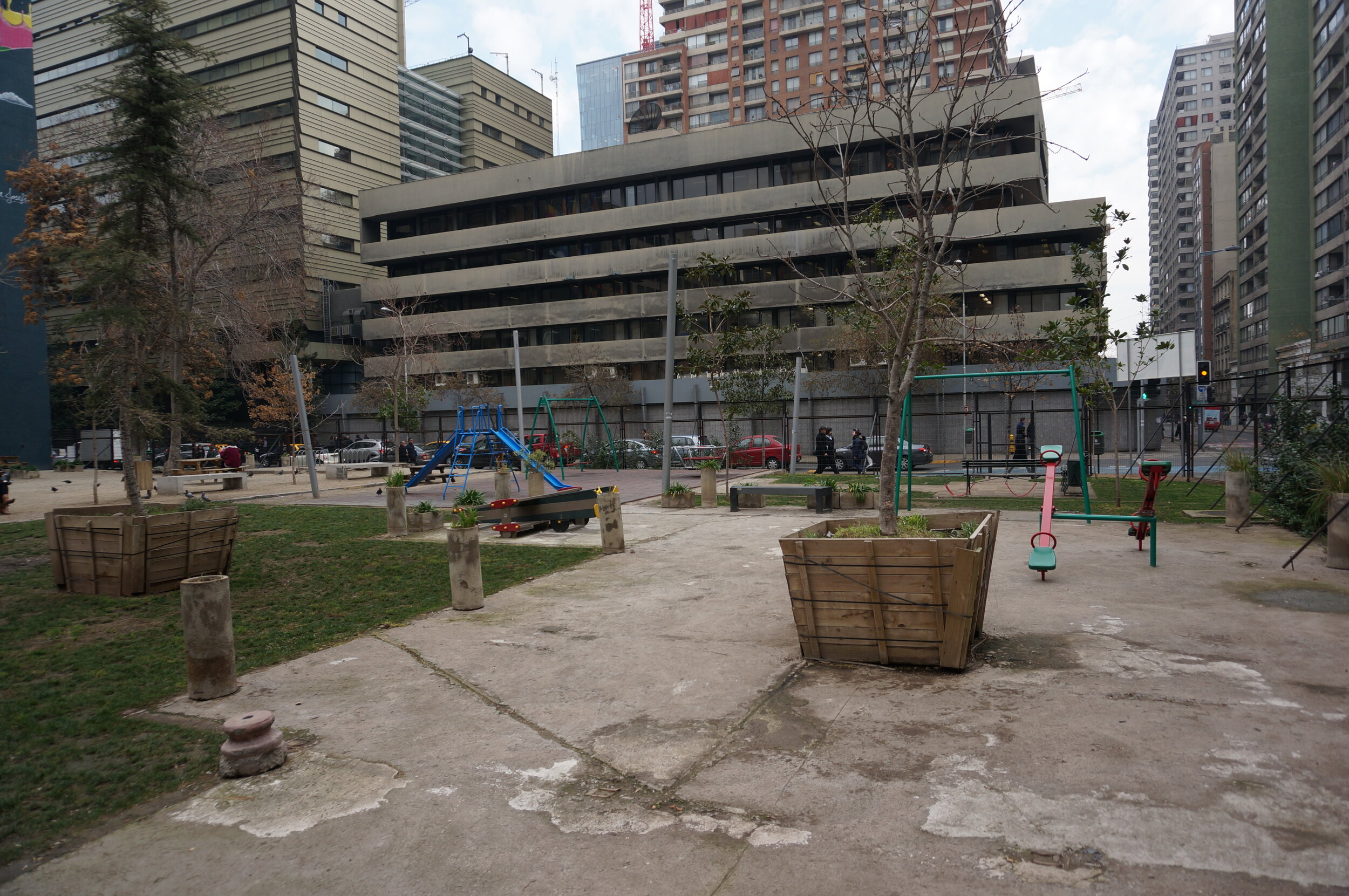
Making Spaces
A comparative study of how two starkly different cities—Boston, MA and Santiago, Chile—approach creating vibrant public spaces.
This project was completed in the summer of 2018 with the generous support from the Thomas C. Barry Summer Travel Fellowship. All photographs are mine unless noted otherwise.
Each city strives to create an environment that is useful to its citizens and takes advantage of its location and resources. Whether cities create a space to beautify the area, encourage cultural growth, or spark economic activity, well-made spaces foster community between its users.
Though design has long been considered as a means to better develop cities, the strategies used to make the ideal metropolis are in constant flux as technology advances, lifestyles change, and our considerations develop. Cities are now finding themselves wanting to implement new principles but are unable to start from scratch.
How do cities with limited surface area for expansion adapt themselves to fit the modern condition?
In Boston and Santiago, cities that have been around since their countries colonial days, public space is reclaimed and repurposed, allowing communities to mend holes and tears in the urban fabric.
My project started in Boston, and I began by exploring the city and looking at a variety of spaces, like the freedom trail, Boston City Hall Plaza, Faneuil Hall, Quincy Market, Back Bay, Copley Square, the Boston Commons, and the Public Garden, to get an idea of what popular public space in Boston looks and feels like.
In Santiago, I started in a similar way. I visited the Plaza de Armas, parks that were known as picnic spots or for artistic playgrounds, and cozy neighborhood plazas. I visited commercial public spaces too, like a metro station that was converted into a tunnel mall, the central market that sells seafood on the outside and has gourmet seafood restaurants on the inside, and numerous shopping hubs focused around one service or product, like a street that only sells eyeglasses.
Mercado Central. Santiago, 2018
Irish Famine Memorial, Freedom Trail. Boston, 2018.
Eurocentro Mall. Santiago, 2018
City Hall Plaza. Boston, 2018
After all the searching, I decided to settle on the Rose Kennedy Greenway in Boston, and the Plazas de Bolsillo in Santiago, because both of them showed how the city made use of the space it took back from unfriendly usage. Both cities’ approach to reclaiming the space demonstrated their latest philosophies on what the needs of the public are, and new ways to meet those.
Rose Kennedy Greenway
The tree-lined boulevard in Boston’s downtown corridor used to carry the Central Artery, Boston planners' solution to their fear that if they did not open up the city to cars, it would die. When it opened in 1959, it carried 75,000 cars per day and kept Boston accessible to the suburbs. In the 90's, however, the highway carried over 200,000 cars daily and caused more than 10 hours of traffic daily. Additionally, the artery essentially cut off the North End and the Waterfront from downtown Boston, fracturing the city and creating neighborhoods that cannot interact with each other or participate in the greater city economy.
In 1991, Boston undertook one of the "one of the largest, most technically difficult and environmentally challenging infrastructure projects ever undertaken in the United States," excavating over 16 million cubic yards of soil and creating over 161 lane miles all while maintaining the artery's capacity as to not interrupt traffic and access to Boston. To determine what to do with the space the city regained, the project team worked with environmental and other oversight agencies, community groups, businesses, and political leaders to create a space for and by the community.
Once the project was completed in 2006, 75% of the recovered land was kept as open space and 25% left for modest development: retail, commercial, housing in low-rise buildings. These spaces have continued to develop and today they offer food trucks, murals and other public art pieces, pop-up events, concerts, games, fountains, and gardens. A closer look at what the Rose Kennedy Greenway provides reveals what Boston believes constitutes good public space and what its citizens need from the city.
Though the Big Dig was regarded as a great success, the Rose Kennedy Greenway was met with mixed reactions. The land was divided into blocks, and some of the blocks get high usage, like the Chinatown Park, where people can be seen playing mahjong and children on the playground any day of the week. Other spaces, like the Mother’s Walk in the Wharf District Parks, do not get much usage; people seem to use the Mother’s Walk as a means of transit rather than as a destination. The parks continue to improve, with temporary and permanent public art exhibitions on display at all times, and city events, like the Boston Calling music festival or weekly farmers markets, taking place on those properties.
Plazas de Bolsillo
The first plaza de bolsillo, or pocket plaza in English, was inaugurated in Santiago in January 2016. An idea originating from principles of tactical urbanism, the plaza de bolsillo allows communities to reimagine Santiago as they see fit.
Seeing empty lots often abandoned or even scheduled to hold a building in the distant future as a waste of space in an increasingly crowded and busy city, urban planners requested to use the space while they remained idle. Because some of these sites have future plans, the plazas de bolsillo have to be easy to pack up and move. That's why it's called a pocket plaza, because the site is a temporary community space much like pockets are a temporary storage space.
In some of Santiago's communes with higher population density, lower income, and as a result, lower rates of green space per person, plazas de bolsillo are a fast, inexpensive, and effective way of creating a space that serves the public. They are spaces where people can meet, relax, get something to eat, and enjoy themselves playgrounds, sport courts, and music. Whether this be through community gardens, public art, artisanal markets, food trucks, games, or programmed events, plazas de bolsillo have something for everybody and can spur economic activity and community sentiment in a neighborhood.
All the plazas have to be created without too much labor and on a budget, emphasizing the temporariness of the space and making it possible for these plazas to pop up in a variety of neighborhoods. The 10 plazas de bolsillo around Santiago have been met with great approval. More are along the way, as the Santiago municipality released a guide explaining how local neighborhoods or the different communes in the city can create their own Plazas de Bolsillo.
While both public spaces were created by the city government in coordination with the more local neighborhood to take back poorly used space, the Rose Kennedy Greenway is a large-scale project that served to change the way the urban fabric of the city operated, while the Plazas de Bolsillo offered more specific opportunities for the people who worked nearby. The Plazas de Bolsillo were an economic strategy to create more public space in a crowded city without spending much money or embarking on long-term endeavors, and therefore had most of their effect at a very local level and were very successful at that level. The Rose Kennedy Greenway is a long-term endeavor that changed the way Boston worked as a city in very large and practical ways: car traffic and the dangers, sound pollution, and spatial division that come with the highway created an unpleasant environment in the middle of the city and also divided important neighborhoods from the heart of the city. With the highway underground, Boston has returned to being a walkable city. However, even after a few years have passed since the Greenway was created, it seems that the Greenway has had trouble engaging locals, and even tourists, to take advantage of the opportunities and gardens offered in the new space. While the Greenway works on engaging more with the communities around it, the Plazas de Bolsillo serve as an example of successful local interventions. Unfortunately, the Plazas de Bolsillo were created under the assumption that the space would be temporary, and as Santiago constructs more and more buildings and lots in the heart of the city become less and less vacant, this solution will no longer be possible. While Boston strives for a stronger local relationship with their public space, Santiago is in need of a sustainable long-term solution to its public space deficit. And neither city, though both have enjoyed successes, has found a perfect solution.




















































